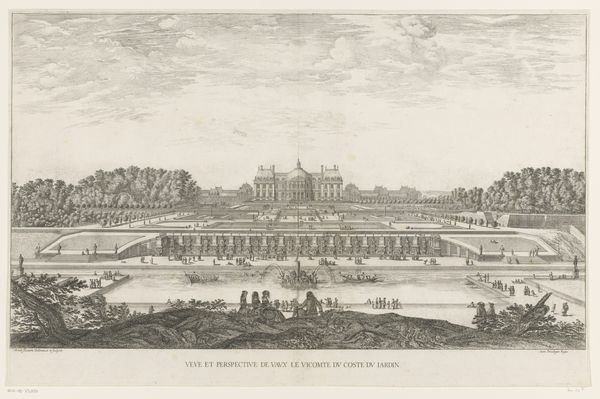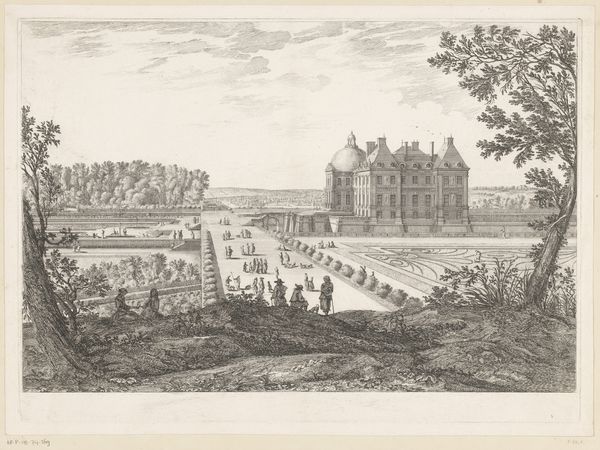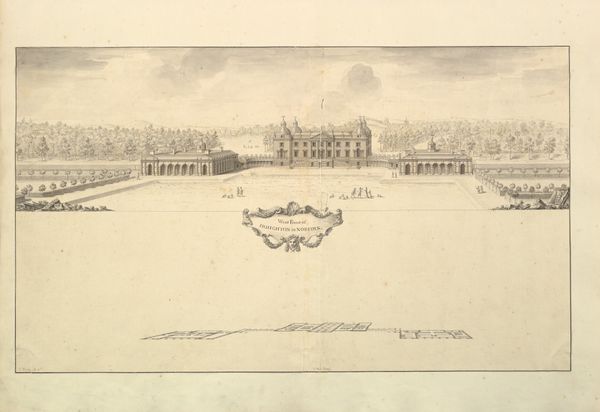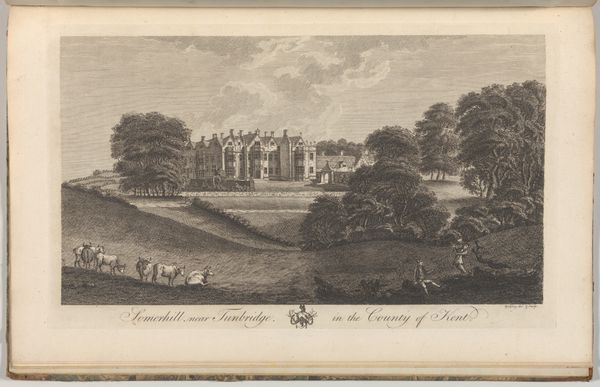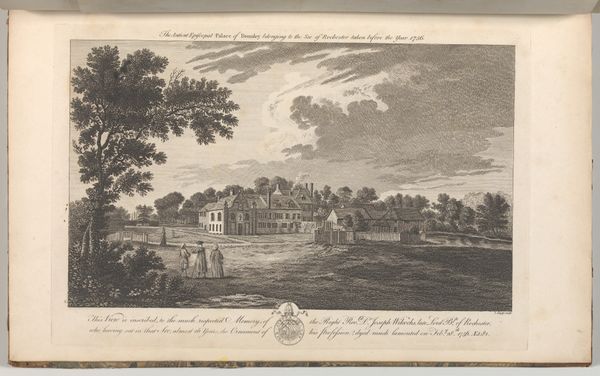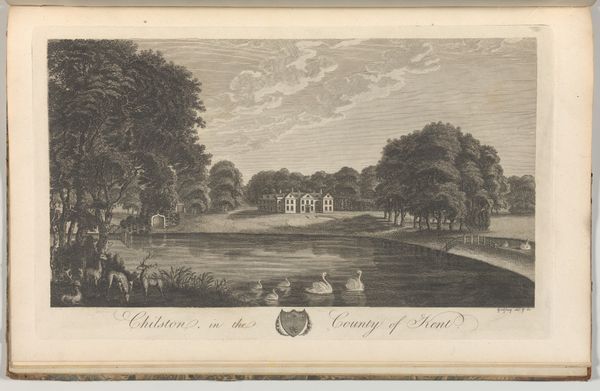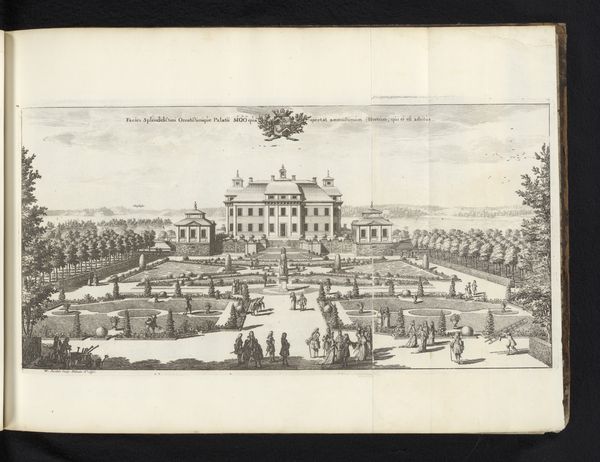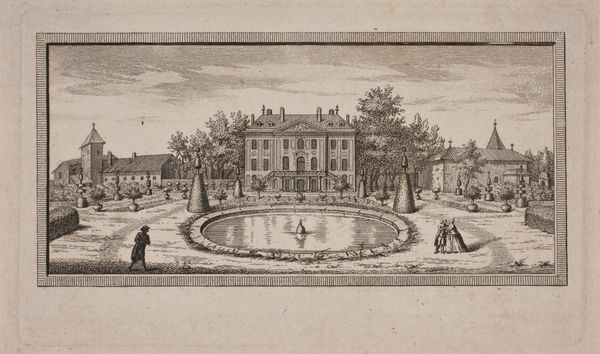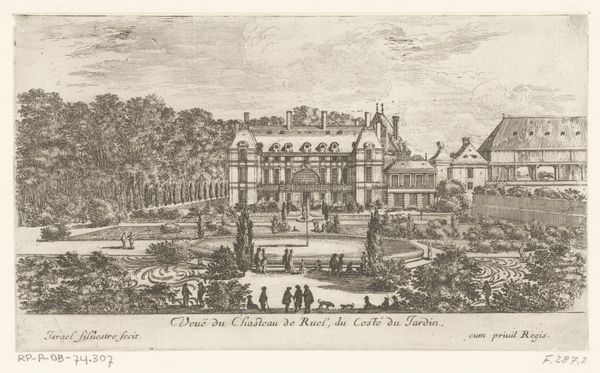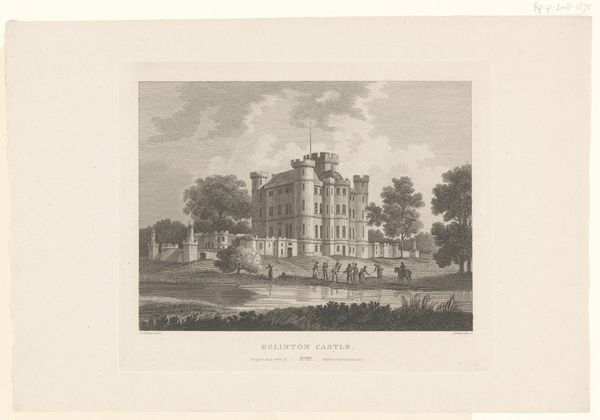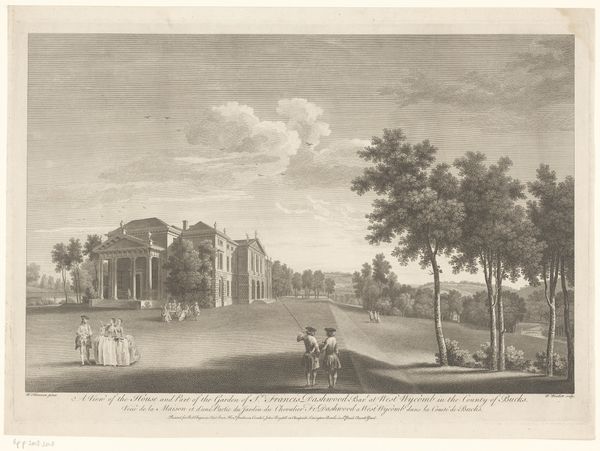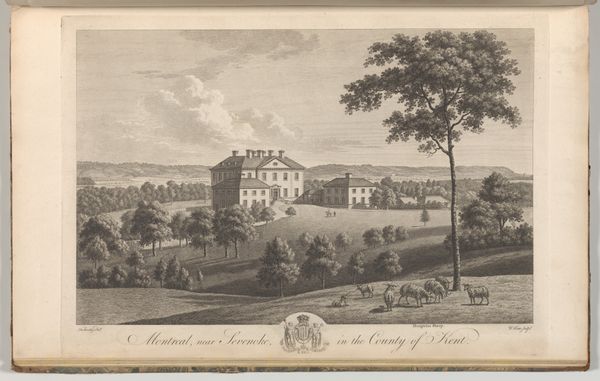
etching
#
baroque
#
etching
#
landscape
#
etching
#
cityscape
#
history-painting
Dimensions: height 466 mm, width 732 mm
Copyright: Rijks Museum: Open Domain
Curator: Here we have Israel Silvestre’s etching, “Gezicht op Vaux-le-Vicomte,” dating somewhere between 1631 and 1691. What do you make of this, initially? Editor: Well, immediately I'm struck by the imposing grandeur, the sort of deliberate stage setting, almost theatrical. The way the estate dominates the landscape hints at a deep-seated yearning for permanence. Curator: That's an interesting point. The scale of Vaux-le-Vicomte, particularly evident here, did have political ramifications. It was a statement of Nicolas Fouquet's power, the superintendent of finances under Louis XIV. Editor: The artist captured how everything leads back to the central structure, the heart and visual representation of Fouquet's power. I note, too, the subtle symbolism in the figures placed seemingly randomly around, each engaged in pastimes perhaps symbolic of different states of mind in regard to wealth and influence. Curator: Absolutely. Fouquet’s ambition, showcased through the lavish estate and captured here by Silvestre, ultimately led to his downfall. Louis XIV, feeling overshadowed, had him arrested shortly after a particularly extravagant fête at Vaux-le-Vicomte. Editor: There’s an inherent tension there, isn’t there? The artwork, unintentionally perhaps, encapsulates not just grandeur but also a warning, that power amassed visibly can draw unwanted attention, envy, and, inevitably, retribution. Curator: Precisely. Silvestre's print, now housed at the Rijksmuseum, serves as a valuable document of a pivotal moment in French history. It depicts not just architecture, but also the socio-political landscape that ultimately condemned its patron. Editor: Reflecting on the composition as a whole, one sees not just the display of an edifice but the artist's skillful ability to suggest a narrative of power, aspiration, and, subtly, an impending sense of doom woven within the very stones depicted. A study not just in architectural form but of fleeting power made solid. Curator: Yes, this piece becomes more poignant as you realize that it immortalizes something on the verge of disappearing—not physically, but as an expression of personal power in that specific context.
Comments
No comments
Be the first to comment and join the conversation on the ultimate creative platform.
